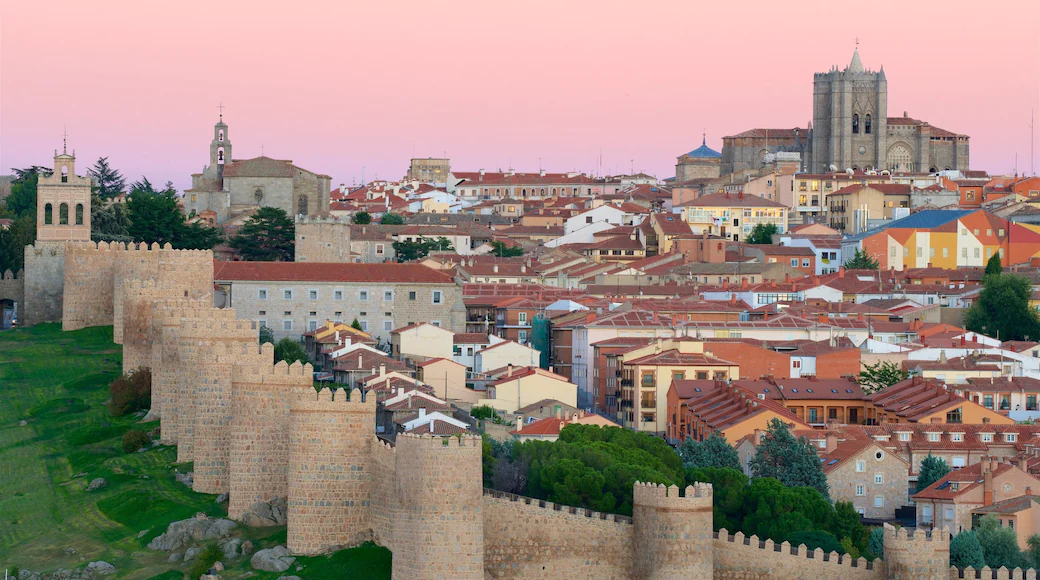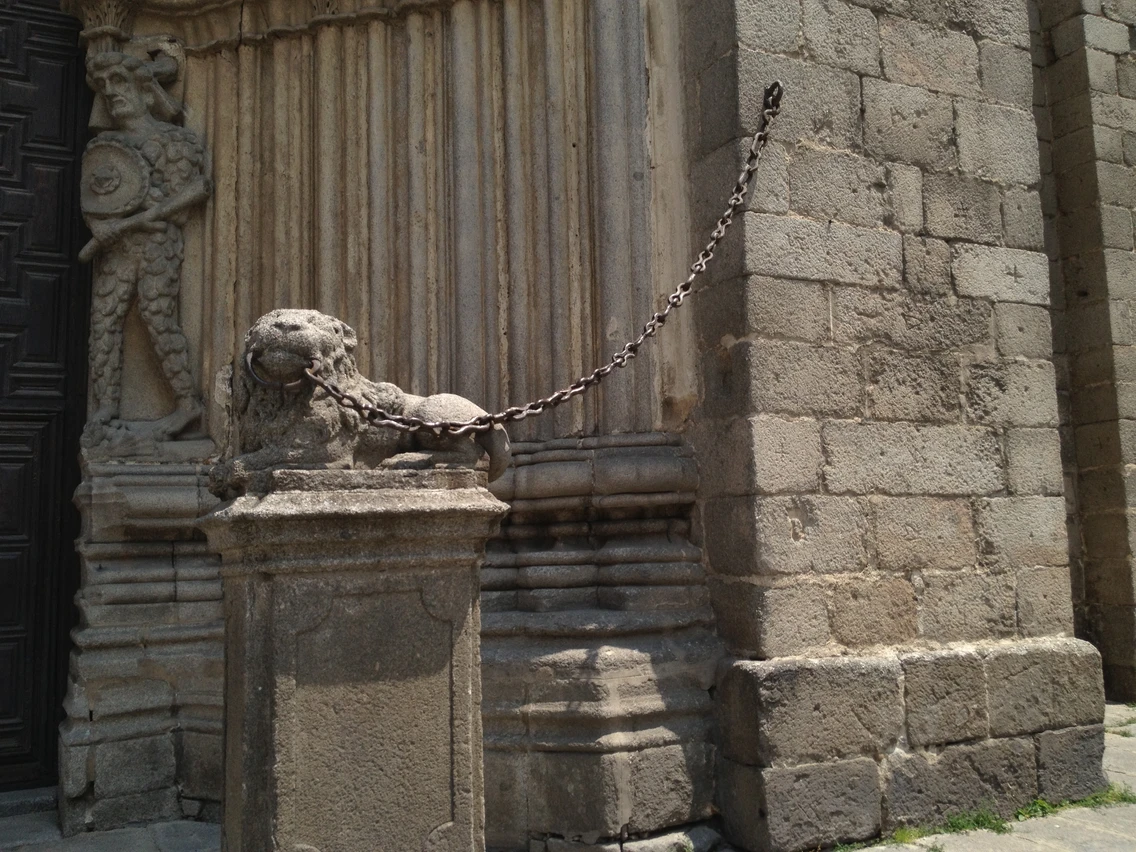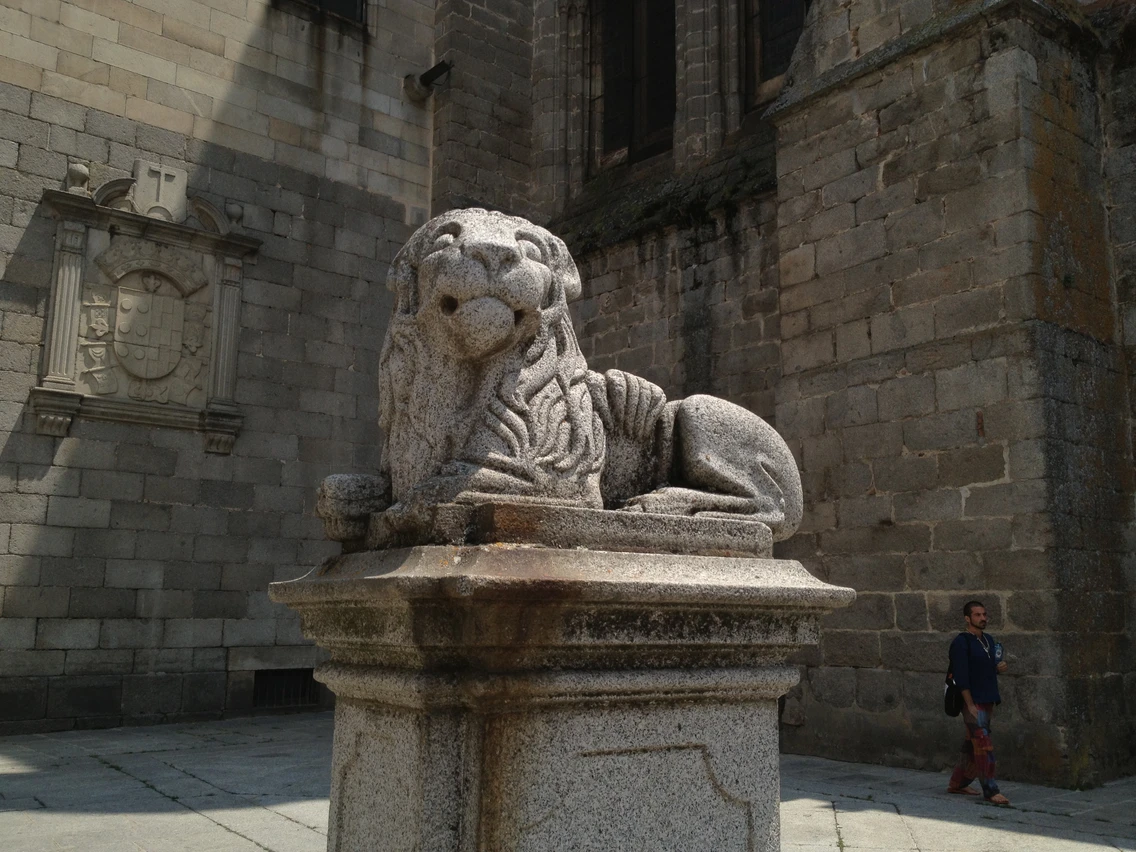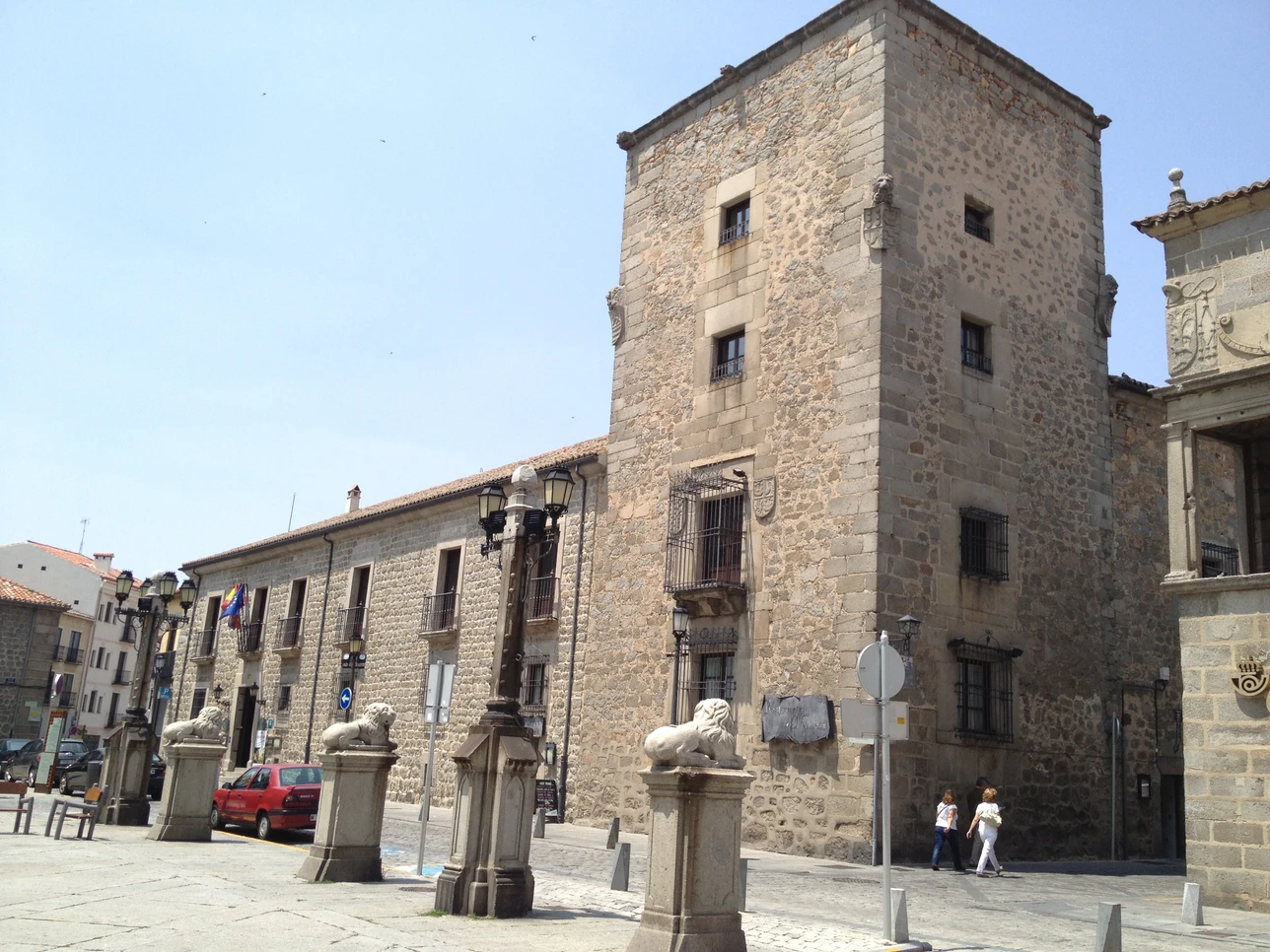From Madrid, we took a day trip to Avila.
Avila certainly gave us a grand welcome. As we arrived, we were greeted by the formidable walls dramatically surrounding the whole city with the red tile rooftops of houses peeking out in between the watchtowers and the turrets. I felt like I was transported back to the 16th century. In fact, Castilian writer Jose Martinez Ruiz said the same thing in his book, El Alma Castillana (The Castilian Soul),” that Avila is “perhaps the most 16th-century town in Spain.”
The city of Avila is the capital of the province with the same name in the autonomous region of Castille and Leon. It has a long history dating back to the pre-Roman period when the area was inhabited by an Iron-Age tribe called the Vettones. They named the place, Obila (High Mountain) and established their fortress there. After the Roman conquest, it was named Abila or Abela and after the fall of the Western Roman Empire, it fell into the hands of the Visigoths, then conquered by the Moors, then repeatedly attacked by the northern Iberian Christian kingdoms. This history certainly gives us a clue as to why Avila has such formidable walls.
I got the chance to admire the city's walls from up close as we approached and as we arrived. One can only truly understand its scale when one is standing face-to-face with the massive and very thick stone walls (on average, 12 meters high and three meters wide). And the whole structure is perfectly preserved!
Our Tour Director mentioned that Avila’s walls are the most completely intact medieval bastion in Spain. It has a perimeter of 2,516 meters enclosing the whole town with 88 watch towers, more than 2,500 turrets, and nine imposing gates. At night, when it is illuminated, it almost looks as magical as a fairy tale tower.
As previously mentioned, Avila had changed hands several times in its history. In the Medieval Age, it had always been a battlefront between Catholics and Moors and for centuries, it had served as a kind of a buffer zone or a no man’s land between the northern Christian Kingdom of Asturias and the Almohad Islamic Caliphate of southern Spain, until peace ensued.
Whenever conflict sparked between the two powers, the area would become a bloody battlefield. Following the reconquest of the area by the Catholics in the 1100’s, the walls were built to repel future attacks and its nine gates were completed over several different periods.
But there were other reasons for its construction, such as, to control the entrance of provisions and merchandise, and to isolate the city from possible plagues and epidemics, prevalent in those times. The city achieved a period of prosperity under the Catholic Monarchs in the early 16th century.
Avila's walls are shaped like an irregular rectangle and one can walk along the top of the walls on certain sections. The eastern side is the most popular and was the first to be constructed because it was the most vulnerable section, being at level with the city with no natural elements of defence.
This makes it the most robust and grandiose side of the walls. This section features a semi-circular turret every 20 meters and has has the largest and most solid gates. The three main gates are situated there - Puerta de San Vicente, Puerta de la Catedral (also called Puerta del Peso de la Harina or Puerta de los Leales), and the Puerta del Alcazar. This section also has a large amount of reused materials from an older Roman necropolis that stood in the same area.
We parked close to the northeast section, hence, the first gate we saw was the Puerta de San Vicente (San Vicente Gate), one of the grandest. It is flanked by two imposing towers linked by a semi-circular arch, a unique feature among European walls. It has Roman origins and was actually erected on the foundations of two earlier towers. It features an animal sculpture on one side and it has been assumed that there used to be another one that was moved from the other side.
This section is most interesting because this is where the walls slightly go inwards, which sort of breaks the rectangular shape (think of a small bite on the top right-hand corner of a rectangular piece of brownie). The curved area is now the location of the Jardin de San Vicente (San Vicente Garden). The artifacts found there, such as ashlars with holes (where ashes were buried), steles (markers positioned above the tombs that bore inscriptions), and tombs with animal sculptures, confirm the theory that this used to be a Roman burial ground.
We walked along the northern and western sides. They are less majestic, but the turrets there were built in the Mudejar style.
The northern side has picturesque views of the downhill slope, a cobbled street (Ronda Vieja), and the lush countryside. It has two gates - Puerta Mariscal and Puerta del Carmen, the prettiest gate, in my opinion.
The western wall offers a spectacular bird's eye view of the entirety of the walled city from its lookout (Humilladero de Los Cuatros Postes) and features the Puerta del Puente.
The southern side is the least interesting, with smaller towers set further apart, as well as signs of depletion. It is not open to the public, since it is in obvious state of disrepair. There are three gates along this wall - Puerta de la Malaventura (also known as Puerta de la Mala Dicha or Arco de los Gitanos), Puerta de la Santa (also known as Puerta de Montenegro), and Puerta del Rastro (also known as Puerta de la Estrella).
Completing the route back to the eastern side, we reached the most spectacular and most dramatic gate, in my opinion - the Puerta de Alcazar (or Gate of the Fortress). Along with the Puerta de San Vicente not too far off, it is flanked by twin towers and is also linked by a semi-circular arch. When it was built, it had a moat and a barbican (a fortified gate located in front of the wall), but they are no longer there. This is the most accessible entrance as it faces the flattest area of the walled city, hence the extra protective structures.
We entered the walled city through the next gate, the Puerta de la Catedral, also known as the Puerta de los Leales (Gate of the Loyal Knights) or Puerta del Peso de la Harina (Gate of the Flour Weighbridge - the tool that used to weigh the grains that entered the city). In centuries past, it was also called, Puerta de las Carnicerías (Gate of the Butcher’s Shop), since there was a butcher shop in the building built right outside the wall.
Today, the old butcher shop serves as the Tourist Office, where inside, we found a huge mural depicting the Walls of Avila at night. With a good camera, one could take a "night-time" photo there, but alas, I only had my phone camera that produced so much glare.
The other adjoining building is now a coffee shop. Our guide said that this used to be the spot where food was distributed to the poor.
The Tourist Office also sells tickets for walking the walls. Currently, there are four access points, with the best one being on top of the Tourist Office though a staircase. This takes you to the eastern side, the most fortified side. The full walk is about 1,700 meters long, because portions of the southern wall are still inaccessible.
I had thought of doing it because this would allow me to appreciate Avila from a different perspective...and I love, love, love ancient fortified cities! However, not all of my travel mates are in good physical condition and are up for the challenge. We heard that there are some steep steps. Plus, I had to consider our time contraints. The walk would take at least an hour and a half. And it was hot! I consoled myself by saying that at least, we had walked around the wall perimeters from the outside. One of my amigas joked that the perimeter walk already met her weekly exercise requirements and that she might not survive another round from a different height.
Back outside, before we entered the city, our Tour Director pointed at one of this gate's towers and identified it as the apse of the cathedral inside. In fact, the church’s apse is the most imposing turret of the east wall.
The 12th-century Avila Cathedral, also known as Catedral de Cristo Salvador de Avila, is literally adjacent to the wall. How cool is that? This church is Spain’s oldest Gothic cathedral and is considered as the centre of the town of Avila.
Outside, it appears very sombre and looks more like a fortress than a church with battlements and sentry walks incorporated into the structure. But inside, one can find spectacular Romanesque features and the transition from the Romanesque to the Gothic style can be clearly seen, with the earlier Romanesque half in red and white “blood” limestone, and the later Gothic half in pure white.
Other notable features of the church include the altar piece that depicts the life of Jesus, the 15th-centrury stained glass window, the paintings by Pedro Berruguete and Juan de Borgoña, the richly-carved choir stalls with reliefs in the Plateresque style, the marble tomb of a 15th-century bishop nicknamed, “El Tostado” (“The Toasted”) due to his skin tone, the sacristy with the star-shaped cupola and gold inlay, and the treasury with its alabaster icons.
As we stepped outside, I couldn’t help but notice the elaborate decoration on the Apostles’ Doorway, as well as the rows of lion statues guarding the door, looking like very regal guards.
Beside the church, there is a museum that features an exhibition of religious art, a 15th-century hymn book, a silver monstrance, a fragment of an altar piece depicting St. Paul, and an El Greco original painting called, "Garcibañez de Muxica."
Unfortunately, we did not have the time to go. In fact, we would not even have a chance to see all of the churches, convents, and royal homes within the walls, since we were just on a day trip. Our Tour Director told us that we were free to explore the town for half an hour or so, have some lunch, then meet him at the Puerta de Alcazar for our afternoon tour of the Convento de San Jose and Convento de Santa Teresa.
My travel amigas and I decided not to venture too far. We just admired the façades of the houses and palaces surrounding the cathedral. There are numerous aristocratic homes established in Avila beginning in the 11th century when a number of noble families decided to settle there. Palace construction flourished in the 15th and 16th centuries, coinciding with the city's social and economic boom. This earned it the moniker, "Avila de los Caballeros (Avila of the Nobles).”
During our sightseeing walk, we noticed the evolution of architecture from the late Gothic to the Renaissance style as depicted by the splendid houses and courtyards. A local also told us that the houses are grouped together according to the families' lineage, and that families of knights naturally built their homes closer to the walls, as they took on the responsibility for its defence. We were also informed that there is a local tour that takes you inside some of the most distinguished churches and palaces, both in and out of the walled city. And yes, you heard me right....there are even more churches and palaces outside.
Avila has certainly a lot to offer and it will take more than a day tour to see everything. But in the meantime, since my amigas and I were tired from non-stop walking under the midday sun, we decided it was time to sit down for lunch. After our architectural intro to Avila, the hungry ladies needed to go on a gastronomic adventure.
Photo Credits:
viator.com, expedia.ca, spain.info, catholic.org, voyagevirtuel.info, terranostrum.es, casadepostas.com, muralladeavila.com, WWikimedia Commons (Zarateman), Wikimedia Commons (Håkan Svensson Xauxa), Wikimedia.org (AdriPozuelo), Mapcarta.com, nomads-travel-guide.com, avilatourismo.com

































































































Comments